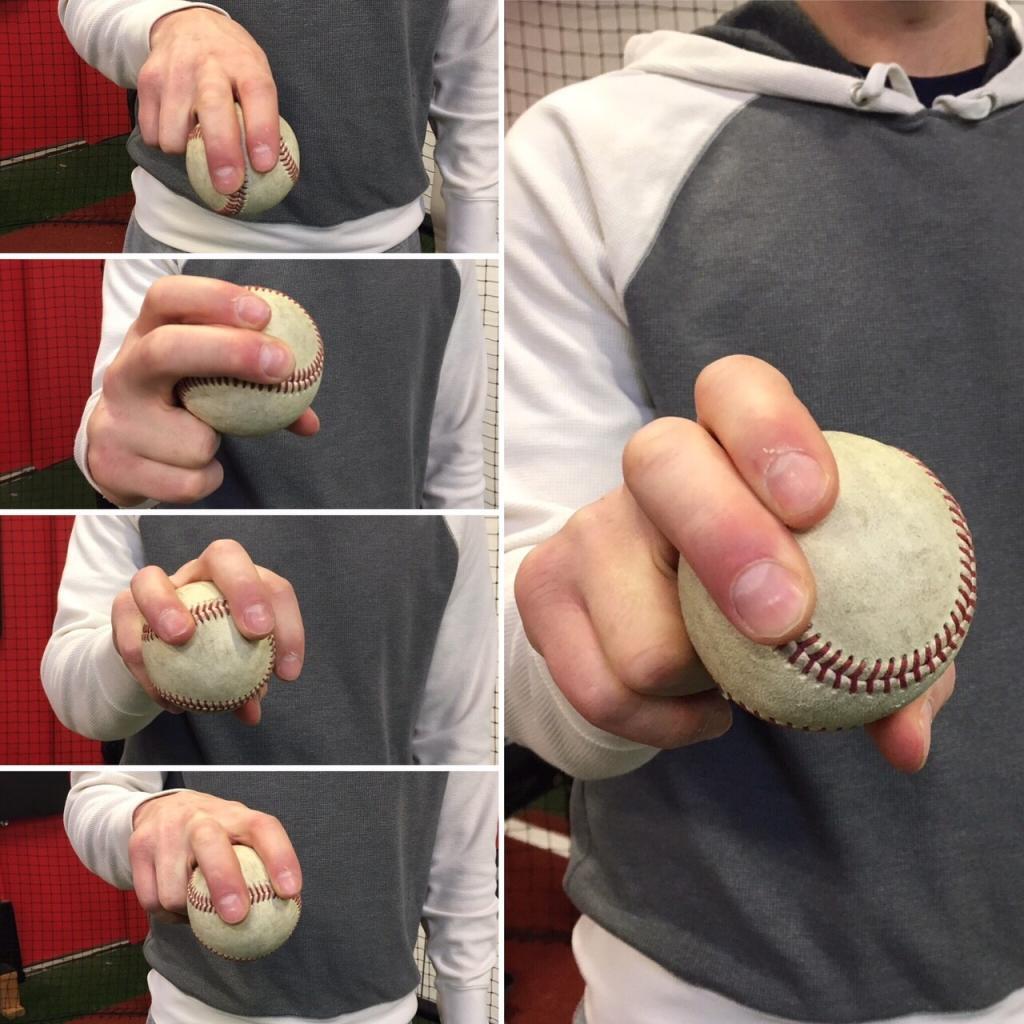
Seams and grips matter, so let’s put that to rest. But how is the baseball spin axis generated? Before we begin, let’s cover a relevant but important topic. As it relates to ball movement, there are two different topics that sometimes get thrown in together as simply “movement”. They are…
-
- Amount of movement
- Direction of movement (spin axis)
Different topics impact each of these differently. So, just for clarity’s sake, in this article we are only discussing direction of movement (spin axis).
Let’s cover seams first. In a prior article, we reviewed how you can throw a 2-seam pitch with adequate lateral movement using a 4-seam grip *** if *** you can create a 2-seam type spin axis. It may or may not be optimal as a pitch, but we basically showed that the orientation of the seams, by themselves, don’t completely explain the direction of movement.
Grips on the other hand, and their role, in creating the direction of movement, are more complicated. How you grip the ball matters for any given pitch, but how you release at the final millisecond is equally important. In order to understand how grips contribute to the spin axis of a baseball and direction of movement, let’s quickly review where “direction” of movement comes from.
A baseball’s movement away from it’s expected path is primarily related to the Magnus Force created around the baseball (click here). The ball will move in the direction of the Magnus Force with the dominant spin axis, where there is less air pressure on the ball as it’s moving through space. The amount and location of the decreased pressure around the baseball is directly due to its spin axes. At any given time, a baseball can be turning along all three axes, x, y and z. However, only 2 of these are relevant to the direction of movement.
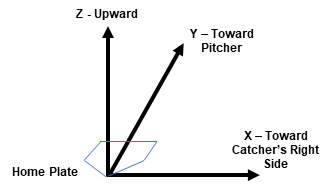
The spin along the y-axis in the image above is the gyro spin, which we have previously discussed as irrelevant to the movement (click here). So, as we wrote at the conclusion of the prior article (click here), if you want the ball to move in a certain direction then you better tilt the z-axis and/or x-axis of the ball in the desired direction.
If you ask most pitchers “what’s the final point of contact you have with the ball prior to release?”, they probably couldn’t tell you. Everything happens so fast that it’s hard to say. So, we are going to slow things down and take a look by going over a few examples:
2-seam Fastball
Here is a video of a 2-seam pitch (pitch stats from Rapsodo are on the video):
Aviles (Indians) 2-seam – 01:34 spin axis
Now let’s take a closer look at this pitch at the point of release. Please note that the ball will physically rotate along with your hand and arm slot at the point of release. So, a pitcher with a higher arm slot will undoubtedly get a different direction of movement vs. one with a lower arm slot. This 2-seam pitch, for example, veered off 11.6 inches laterally. A different pitcher with a higher arm slot would likely have less lateral movement with this grip / hand / finger release pattern.
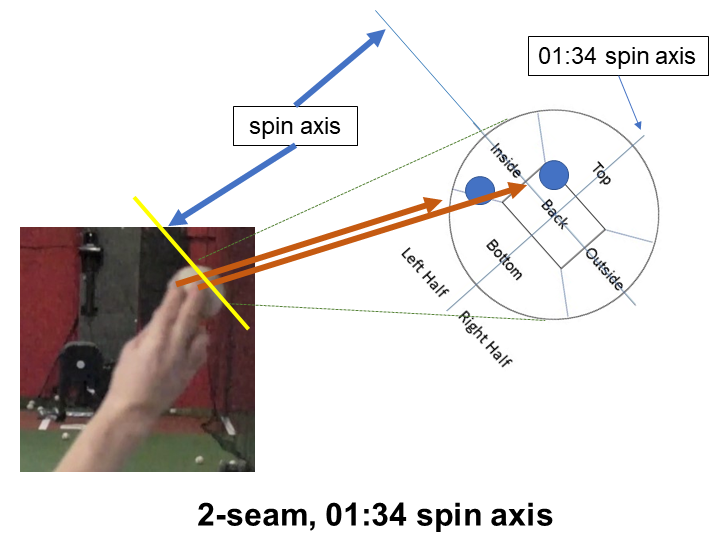
If we slowed this down at the point of release and looked at it frame-by frame, you can clearly see how the spin axis of the baseball on this 2-seam pitch is generated along the path of the middle finger. This finger is in contact with ball for the duration (small circles) and happens to be the final point of contact with the baseball.

Now let’s line up the small circles in a single image (approximately).
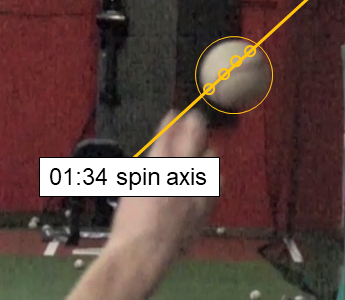
It should be no surprise the spin axis of the baseball on that yellow line is the same as the spin axis of this pitch. Where you begin your grip matters. What seems to also matter is the progression of the fingers during the release.
Change-up
Here is a video of a change-up (pitch stats from Rapsodo are on the video):
Aviles (Indians) Change-up – 02:28 Rapsodo spin axis
Let’s also slow this video down. You can clearly see how the spin axis of the baseball is generated along the path of the ring finger. Once again, small circles are highlighting the approximate points of contact.
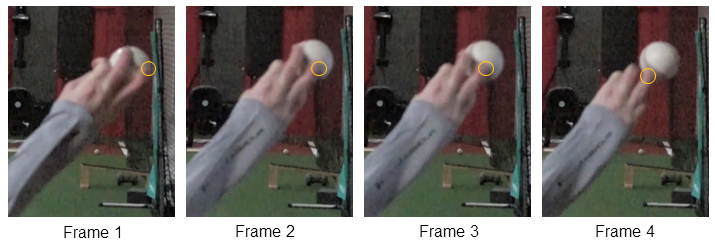

The yellow line represents a similar spin axis to the one highlighted earlier in the video above for this change-up pitch. Please note, this article isn’t telling you how to grip a 2-seam or a change-up. Every pitcher is different. For example, here is an equally effective change-up with a nearly 02:00 baseball spin axis where the ball comes off the middle finger (and not the ring finger). It’s in slo-motion, you can clearly see it during playback.
Palladino (formerly w/ the Yankees) Change-up – 01:58 spin axis
To summarize, grips and seams matter, but it appears that how you actually release the ball off your hand and fingers is equally relevant in creating the desired spin axis on the baseball.
If you’re a pitcher you probably already innately knew that!
By Bahram Shirazi (BSEE, MBA, Co-Owner RPP)
You live too far to train with us in-house at RPP? You can now train with us on a REMOTE basis.


